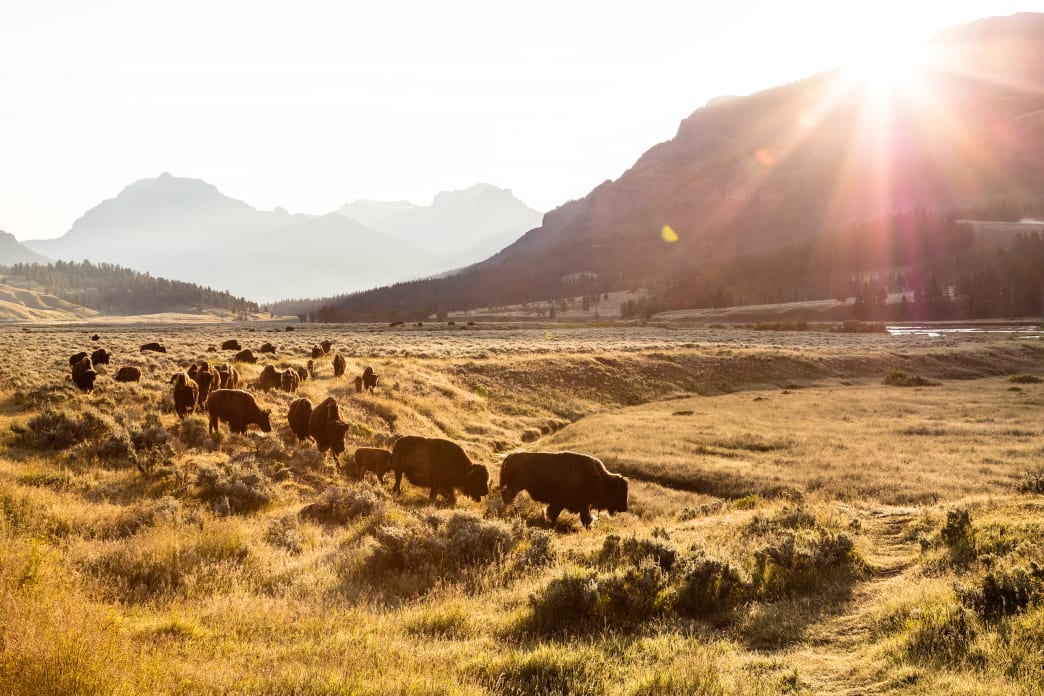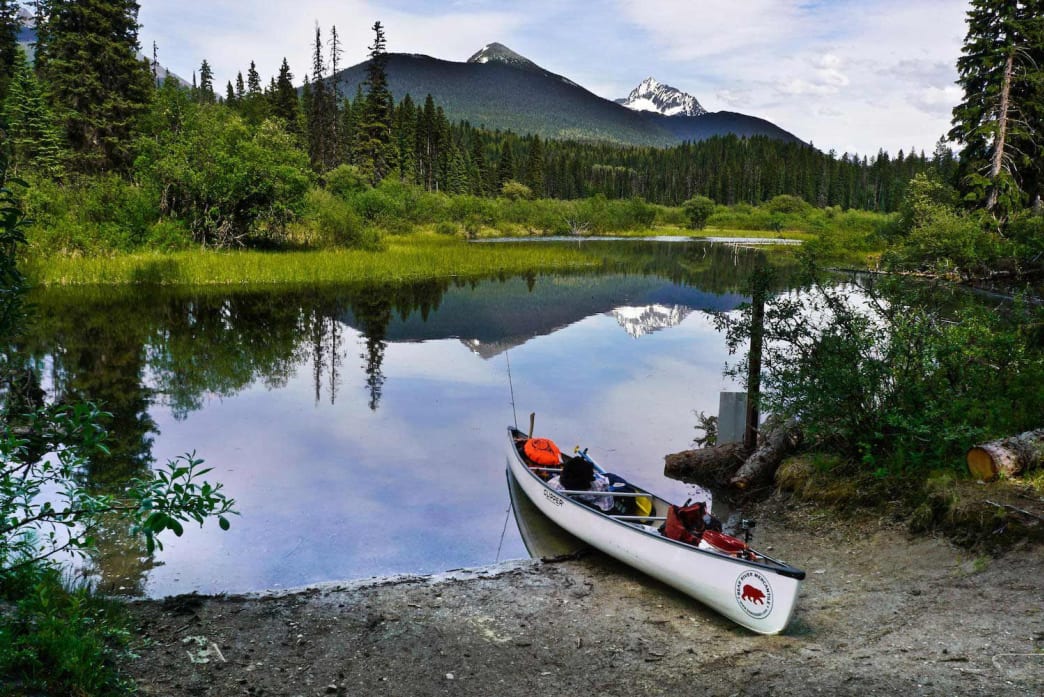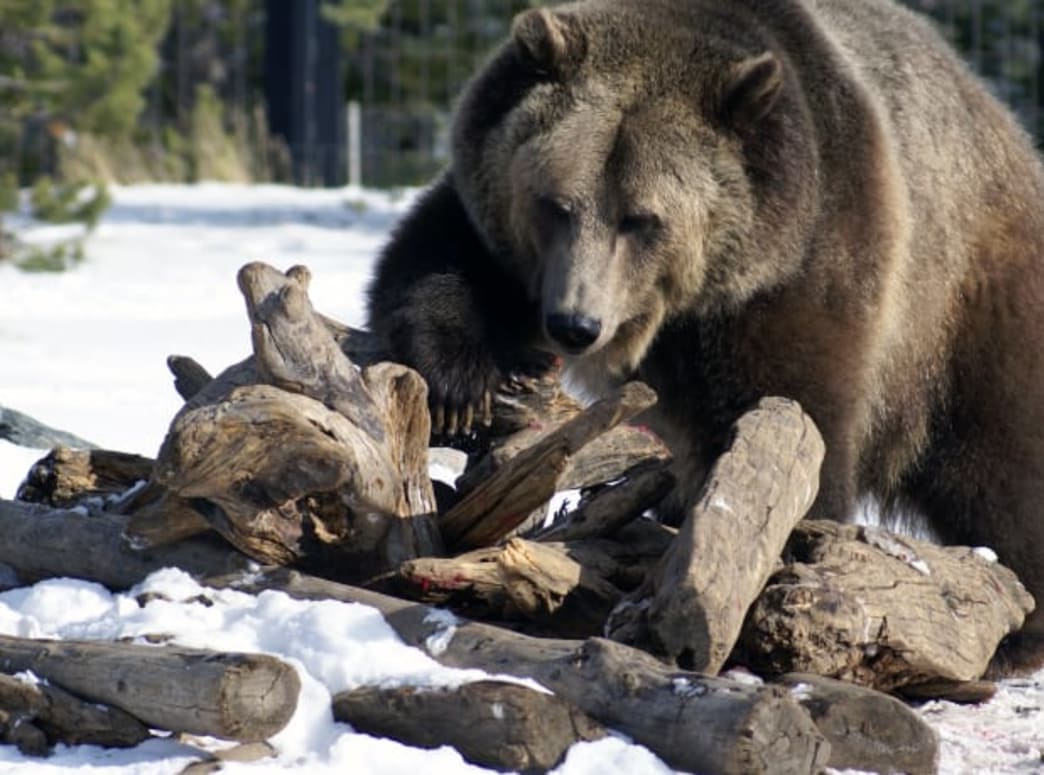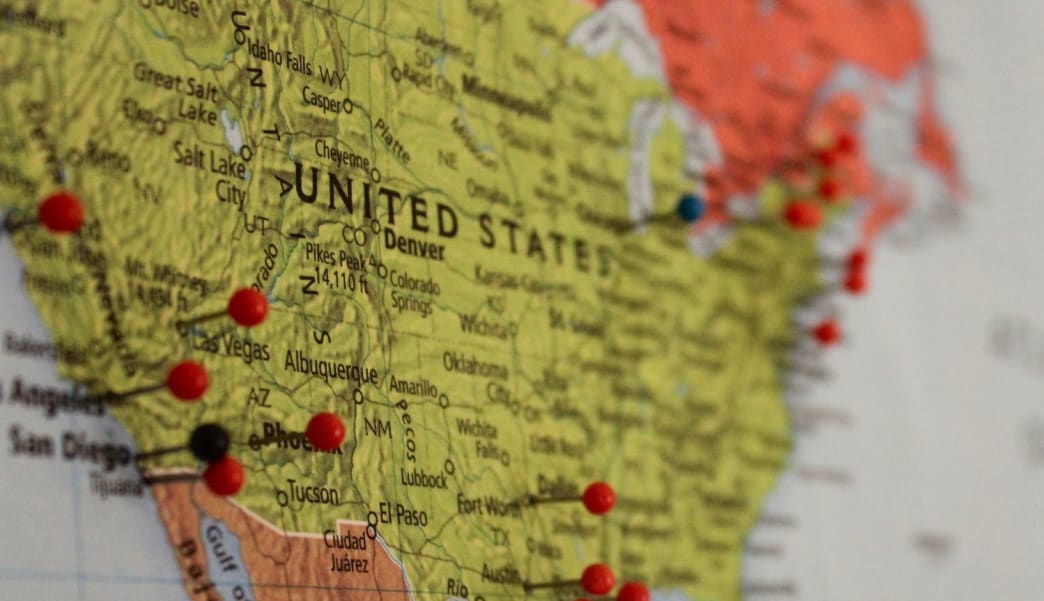A Guide to Yellowstone's Gorgeous & Underrated Northern Range

The Northern Range of Yellowstone National Park has the claim to fame of being the only area of the park that’s accessible by automobile year-round. But that doesn’t begin to tell the whole story of what makes these 600 square miles in the Lamar and Yellowstone river basins so spectacular. Located between the Gallatin Mountains to the southwest and the Absaroka Mountains to the northeast, this scenic region is the best place to see bison, wolves, and other free-roaming wildlife. The 57-mile route from Gardiner to Cooke City is one of the park’s signature drives, offering breathtaking views any time of the year. Getting off the road, you’ll also find a wide range of activities to enjoy.
A Mecca for Wildlife

While the Northern Range is only 10 percent Yellowstone’s area, it is one of the most important wildlife hubs in the region, having been described as the "Serengeti of North America," thanks to the large number of hoofed mammals (known as ungulates) who make the park home. In any given afternoon, you’re likely to spot bison, elk, pronghorn, and mule deer. You’ll also find the densest wolf population in the country, and visitors now have the chance to see these carnivores in the wild. It’s also one of the park’s best opportunities for spotting bears.
Seeing the wildlife in action is one of the biggest draws to this section of the park. The easiest way to do so is via the scenic drive that connects Gardiner to Cooke City through Yellowstone. Follow the park’s northern entrance road south to Mammoth Hot Springs. From there, head east on the Grand Loop Road, where you’ll get to see the rugged canyons between Abiathar Park and Amphitheater Mountain. You’ll find frequent pull-offs along the road to stop and get a better look. The trip should take you under two hours, and give you some of the Northern Range’s top highlights along the way.
For a closer look, daylong and multi-day wildlife expeditions can help you get nearer to the action. Outings differ by company, but most guides are well-versed in the area’s ecology and offer spotting scopes and binoculars. In Our Nature Guiding Services offers a trained wildlife biologist for your guide while Yellowstone Insight offers tours aided by the watchful eye of a wildlife photographer with decades of experience in the region.
"Having a knowledgeable, local guide who does this regularly—who participates in this daily routine—increases your odds of seeing your preferred wildlife," says MacNeil, founder and owner of Yellowstone Insight.
Winter Exploration
In the winter, a snowmobile or snowcoach is a great way to explore the interior of the park further, and guides offer a variety of options. For those interested in seeing wildlife, winter is a great time to visit, as the snowy landscape often makes it much easier to spot animals. Cross-country skis and snowshoes are another popular way to take advantage of Yellowstone’s snowy conditions, with many beginner-friendly trails for those getting started in either sport.
Hiking

Come summer, hiking is the best way to really get to see the Northern Range. Once again, guided excursions are available both inside and outside the park, with hikes ranging from daylong explorations to overnight adventures. Hiking with a guide provides visitors expertise into scenery, wildlife, and choosing the best trail for the time of the year. Most hiking companies provide bear spray as well as interpretive services and safety protocols for traveling in bear country.
Yellowstone Hiking Guides provides daily trips in the Northern Range as well as custom outings. Big Wild Adventures offers outfitted, multi-day backpack trips in areas around the Gallatin Mountains. Trips are available in a variety of lengths and difficulty levels. "The wildflowers in summer are just spectacular," says Howie Wolke, founder and co-owner of Big Wild. “It’s classic open Yellowstone backcountry in a mountainous environment.”
Towering over the town of Gardiner, Electric Peak is the crown jewel of the Gallatin Mountain Range. Named by an exploratory expedition that was almost hit by lightning on its summit, the peak stands tall at nearly 11,000 feet. You can find an experience near the mountain, no matter how much energy you want to expend.
For those looking for a mild adventure, a midday stroll in downtown Gardiner, complete with ice cream cones and gift shops, affords commanding views of the mountain’s rocky summit. Try walking the sidewalks around Roosevelt Arch, an historic stone archway, for family-friendly exercise.
For a more serious day hike in the Gardiner area, the Rescue Creek Trail just inside Yellowstone’s North Entrance gate is a nice out-and-back, relatively flat hike through high-mountain desert. For more of a challenge, the Lava Creek Trail is a four-mile (one way) hike, starting at the trailhead at the Lava Creek Picnic Area on Grand Loop Road. It’s a great trail for spotting elk, bison, and pronghorn, plus you’ll get some amazing views of Lava Creek and Mount Everts.
For those adventurous souls looking to summit Electric Peak, the multi-day hike requires a map and compass, some mountaineering ability, grit, and a backcountry camping permit from Yellowstone National Park’s backcountry information office. For those up for it, it’s an incredibly rewarding experience.
Fishing

The Northern Range is known for its pristine water, scenic surroundings, and world-class trout fishing. For those looking to experience fishing in the area, you’ll find several outfitters in Gardiner that offer trips both wade fishing or from a boat. The Flying Pig Adventure Company offers half- and full-day trips for beginners and experienced casters as well as horseback rides to secluded fishing destinations. Parks’ Fly Shop, which has operated in the Northern Range for more than 60 years, offers highly specialized flies and local insight. Both offer customized outings to lakes, rivers, and spring creeks throughout the region.
"The Northern Range is notable for the huge number and huge variety of fisheries it offers," says Walter Wiese, head guide at Park’s Fly Shop. “Most of our staff have been guiding in the region for 10 or more years, and we’re still finding new waters.”
The Gardiner Experience
No matter how you choose to experience the Northern Range and town of Gardiner, you’ll undoubtedly find yourself longing to come back for more. Thankfully, this entrance town is open every season, and its one-of-a-kind location has a reputation for capturing the hearts and minds of residents and visitors alike.
Written by Chelsea Deweese for RootsRated in partnership with Gardiner CVB and legally licensed through the Matcha publisher network. Please direct all licensing questions to legal@getmatcha.com.




Comments